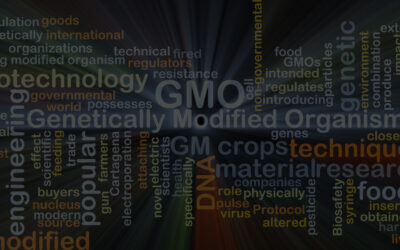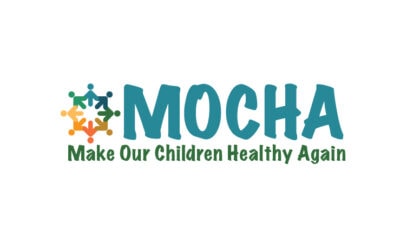Pat Thomas reports on animal sentinels in a toxic world
For a Video Lecture on “What’s Making Our Puppies Sick?”, click here.
At-a-glance
The once-rare blood cancer lymphoma is now common in humans but also in animals, with dogs, cats, and even cattle being affected.
Lymphoma incidence in humans steadily rose during the 20th century, and though recent years have seen a slight decline in overall incidence, some subtypes continued to increase sharply in the 21st century.
Today in the US, the most common type of lymphoma, non-Hodgkin lymphoma, is the seventh most common cancer in both men and women.
Genetics alone cannot account for such a rapid rise; environmental factors must be a major factor.
A 2012 study found that the use of lawn care pesticides raised the risk of lymphoma in dogs by 70%.
In the early years of the 21st century, rates of lymphoma in beef cattle rose sharply, coinciding with a rise in the use of genetically modified (GM) glyphosate-tolerant crops in animal feed.
More than 40,000 people have filed lawsuits alleging exposure to Roundup herbicide (the active ingredient of which is glyphosate) is the cause of their non-Hodgkin lymphoma.
Pet owners are recommended to keep their animals away from herbicide-sprayed areas and to switch them to an organic diet – safety measures that also make sense for humans.
In recent years the concept of “One Health” – a recognition that the health of people is connected to the health of animals and the environment – has begun to change the way health agencies throughout the world think about research and policy.1
Today we are seeing the people/animals/environment connection playing out in real time as evidence suggests that glyphosate-based herbicides could be causing cancer not only in people, but in our animals as well.
A case in point is lymphoma, a type of blood cancer that begins in the lymph glands, the body’s first line of defense against infection. There was a time when lymphoma was considered a rare cancer. But although overall incidence rates have declined slightly in recent years, this has hardly made a dent in the long-term trend during the 20th century – a steep and steady rise. And certain subtypes of lymphoma continued to increase sharply between 2001 and 2012.2
Today in the US, the most common type of lymphoma, non-Hodgkin lymphoma (NLH), is the seventh most common cancer in both men and women.3 Toxicologists will tell you that when otherwise rare diseases become more common, something is up. Usually that “something” is a new factor in the environment or in the diet.
Where lymphoma is concerned, it could be both – and the bad news is that people aren’t the only ones suffering. Our pets and farm animals are being affected too.
One toxic connection that links people, pets, and farm animals is exposure to the herbicide Roundup produced by Monsanto (now Bayer). Roundup is based on the chemical ingredient glyphosate. Glyphosate-based herbicides are the most widely used weed killers in the world. In the US they are sprayed on around 94% of soybeans, which are genetically modified to tolerate glyphosate.4
In March 2015, glyphosate was classified by the World Health Organization’s International Agency for Research on Cancer (IARC) as “probably carcinogenic to humans.”5 Farmers, farm workers, landscapers, gardeners, and others who use Roundup weed killer or other glyphosate-based herbicides are at risk for developing NHL and other forms of cancer.
Currently more than 40,000 people have filed lawsuits alleging exposure to Roundup (the active ingredient of which is glyphosate) is the cause of their non-Hodgkin lymphoma.6
This number is expected to grow and science is on their side. A recent study showed “compelling” evidence7 of a link between exposure to glyphosate and glyphosate-based herbicides and endocrine disruption and genetic alterations commonly associated with the development of lymphomas.
Pets at risk
The long-term rise in lymphoma rate in humans has been mirrored by a similar rise in our pets. Dogs are particularly vulnerable. Our dogs share our environments and therefore our exposures to toxic chemicals. They run across, roll around and wrestle in treated grass. They may eat grass or other treated vegetation (or glyphosate-contaminated pet foods),8 or take chew toys and other objects that have been sitting on treated grass into their mouths. This means that like us, they can be exposed to glyphosate both externally and internally.
It’s not surprising, then, that lymphoma is one of the most common malignant tumors detected in dogs, accounting for 20% of all canine cancers9 – and it has strong links to pesticide use.
A 2012 study from Tufts University’s Cummings School of Veterinary Medicine found that while the use of flea and tick products was not related to canine lymphomas, the use of professionally applied lawn care pesticides raised the risk of lymphomas in dogs by 70%.10
The study does not, unfortunately, indicate which pesticides. According to the authors, exposure to 2,4-dichlorophenoxyacetic acid (2,4-D) and 4-chloro-2-methylphenoxypropionic acid (MCPP) has previously been implicated in canine cancer.10 So has another herbicide, dicamba.11 But for controlling weeds in residential lawns and areas such as patios, paths, and driveways, glyphosate was then and is now a herbicide of choice, in part because of the belief in its low toxicity.
Some believe the rise in lymphomas in dogs is genetic. But increasingly in humans and animals we are beginning to understand that even when there is a genetic risk factor, something else12 in the environment or the diet is usually more influential in triggering disease.
An ongoing survey by HRI Labs has produced preliminary data using LC-MS/MS showing levels of glyphosate in dogs’ urine and in commercial dog foods.13 As yet the sample sizes are small, so it’s not possible to know if the results are generally true. HRI found that dogs had 32 times higher glyphosate levels in urine (16 ppb, parts per billion) than humans (0.5 ppb). Higher levels of glyphosate of over 3 ppb were found in human urine in another testing project using LC-MS/MS.14 Dogs that ate raw food had virtually no detectable glyphosate; those that ate canned food had more; and those that eat dry kibble had the highest levels.
Lymphoma is also one of the most common cancers diagnosed in cats.15 Feline lymphomas are commonly linked to feline leukemia virus (FeLV) or to feline immunodeficiency virus (FIV). But as with genetic factors, the presence of a virus does not automatically lead to disease. Something else is happening.
Cows with cancer
Our farm animals too are suffering.
The USDA’s Food Safety and Inspection Service (FSIS) maintains records on the post-mortem examinations of slaughtered livestock. These examinations are used to decide which cattle are inedible and which can go into the food system.
For a brief period – 1998-2002 – the results of these examinations were made public.16 The data showed that lymphoma was present in an alarming number (around 20%) of dairy cattle condemned post-mortem. Since 2002 the records have not been publicly available. But a freedom of information request covering the years 2003-2007 showed that rates of malignant lymphoma detected in post-mortem examinations continued to be high, at 22.3% of all condemned cows.17
Between 2005-2007 the records showed that 26.87% of dairy cows and 13.35% of beef cows were condemned due to the presence of malignant lymphoma. The high percentage found in beef cows was a new phenomenon. The early FSIS data, on average, showed a rate of around 2%.
This jump seems to coincide with a sharp rise in the number of grain fed beef cattle in the US.18 It also coincides with a rise in the use of glyphosate-tolerant GMO maize and soy19 – and with this, a rise in the use of glyphosate.
A wide range of GM crops are used in animal feed20 for both dairy and beef cows – though maize and soy are by far the most popular choices.
In cattle, lymphoma is related to the presence of bovine leukemia virus (BLV) – which is particularly prevalent in dairy cows. The prevalence of BLV in US dairy cattle has been increasing over recent decades, with the most current report estimating that 94% of herds and 42% of dairy cows are positive for BLV antibodies.21 Unlike other countries, the US has no consistent program for control of the virus. Even so, the staggering number of cattle with lymphoma can’t simply be explained away by a virus.
Better and more publicly available data from the FSIS and more research data on the origins of lymphomas in cattle could help us understand more.
What can be done?
Glyphosate is one of the most widely used herbicides in history. In 2014 farmers sprayed enough of it to cover every acre of cropland in the world22 with nearly a half-pound of the herbicide.
Its widespread use is unprecedented – and until recently that use has been allowed to increase without any serious attempts to understand the consequences.
The legal remedies being sought by the 40,000 people affected by glyphosate exposure will go a long way towards reining in its use. The first three Roundup cancer lawsuits to proceed to trial resulted in a combined $2.424 billion in jury verdicts (subsequently reduced by judges) – hitting the chemical companies where it hurts most.23
We can end this uncontrolled experiment in our own lives by not using Roundup or any other glyphosate-containing herbicides in our gardens. If your local park uses glyphosate, don’t walk your dog there. Or better yet, for the health of all park users, get together with your neighbors and lobby the park owners to stop using glyphosate.
People pressure can work. Already, more than two dozen countries have banned or restricted its use.24 In the US in 2018, Portland25 banned it, as did the city of Austin.26 In 2019 Miami27 and Los Angeles County28 approved their own bans on city property, while Seattle29 agreed to restrict its use.
To further protect your pet, check this list of glyphosate-containing pet foods30 from the 2018 study linked above, and avoid those. The analytical method used, ELISA, is prone to false positives. But pending further testing using the more up-to-date and accurate method known as LC-MS/MS, the list may provide a rough guide.
Based on the HRI data quoted above, switching your pet to a raw diet seems to be a good way of reducing glyphosate intake. HRI has not reported data from dogs fed an organic diet, but a separate study in humans found that switching to an organic diet rapidly reduced urine levels of several pesticides.31 Glyphosate was not tested in this study and as yet no study has been published that measures glyphosate levels in human urine before and after switching to an organic diet.
It is a sensible precautionary measure for humans wishing to reduce their pesticide intake to switch to an organic diet, including organic and free range meat and dairy products. The more people who do this, the more producers will get the message.
Pat Thomas is a director of Beyond GM. See www.beyond-gm.org
For a Video Lecture on “What’s Making Our Puppies Sick?”, click here.
References
1. Destoumieux-Garzón D et al. The One Health Concept: 10 years old and a long road ahead. Front Vet Sci. 2018;5: 14. doi: 10.3389/fvets.2018.00014.
2. Teras LR et al. US Lymphoid Malignancy Statistics by World Health Organization Subtypes. CA Cancer J Clin 2016; 66:443–459. https://acsjournals.onlinelibrary.wiley.com/doi/pdf/10.3322/caac.21357
3. American Cancer Society. Cancer Facts & Figures 2019. Atlanta: American Cancer Society. 2019.
4. Statista. Percentage of genetically modified crops in the U.S. in 1997, 2018 and 2019, by type. 2019. https://www.statista.com/statistics/217108/level-of-genetically-modified-crops-in-the-us/
5. IARC Monographs Volume 112: Evaluation of five organophosphate insecticides and herbicides. International Agency for Research on Cancer, 20 March 2015. Accessed at: https://www.iarc.fr/wp-.content/uploads/2018/07/MonographVolume112-1.pdf
6. Baum Hedlund Aristei Goldman. Monsanto Roundup Lawsuit. 2019. Accessed at: https://www.baumhedlundlaw.com/toxic-tort-law/monsanto-roundup-lawsuit/
7. Zhang L et al. Exposure to glyphosate-based herbicides and risk for non-Hodgkin lymphoma: A meta-analysis and supporting evidence. Mutat Res/Rev Mutat Res. 2019; 781: 186-206. doi: 10.1016/j.mrrev.2019.02.001
8. Zhao J et al. Detection of glyphosate residues in companion animal feeds. Environ Poll. 2018; 243(Part B): 1113-18. doi: 10.1016/j.envpol.2018.08.100. Note: The ELISA detection method used in this paper, while commonly used to test for glyphosate, is prone to false positives (see https://twitter.com/FDSEA_Finistere/status/1206986018374791168/photo/1). Thus the results need to be confirmed by the more reliable method, LC/MS-MS.
9. American Animal Hospital Association. Is my dog at risk for cancer? Accessed at: https://www.aaha.org/your-pet/pet-owner-education/ask-aaha/canine-cancer/
10. Takashima-Uebelhoer BB et al. Household chemical exposures and the risk of canine malignant lymphoma, a model for human non-Hodgkin’s lymphoma. Environ Res. 2012; 112: 171-6. doi: 10.1016/j.envres.2011.12.003
11. Knapp DW et al. Detection of herbicides in the urine of pet dogs following home lawn chemical application. Sci Total Environ. 2013; 456-457: 34-41. doi: 10.1016/j.scitotenv.2013.03.019. https://www.sciencedirect.com/science/article/pii/S0048969713003100
12. Wu S et al. Substantial contribution of extrinsic risk factors to cancer development. Nature. 2016; 529: 43-7. doi: 10.1038/nature16166.
13. Dodds W Jean. Glyphosate and your companion pets. Hemopet. 12 January 2020. Accessed at: https://www.hemopet.org/glyphosate-your-companion-pets/
14. Food Democracy Now! and The Detox Project. Glyphosate: Unsafe on any plate: Food testing results and scientific reasons for concern. 2016. Accessed at: bit.ly/glyphosateFood
15. Illinois College of Agricultural, Consumer and Environmental Sciences. Feline lymphoma can go all over. Sept 22, 2009. Accessed at: https://aces.illinois.edu/news/feline-lymphoma-can-go-all-over
16. USDA Food Safety and Inspection Service. Animal Disposition Reporting Systems (ADRS) Fiscal Year (FY) Data 1991-2002. Accessed at: https://www.fsis.usda.gov/OPHS/adrsdata/adrsfydx.htm
17. White TL, Moore DA. Reasons for whole carcass condemnations of cattle in the United States and implications for producer education and veterinary intervention. J Am Vet Med Assoc. 2009; 235(8): 937-41. doi: 10.2460/javma.235.8.937
18. MacDonald JM, McBride WD. The transformation of U.S. livestock agriculture – Scale, efficiency and risks. USDA Economic Information Bulletin Number 43. January 2009. Accessed via the Wayback Machine: https://web.archive.org/web/20130308101326/http:/ers.usda.gov/media/184977/eib43.pdf
19. Van Enennaam AL, Young AE. Prevalence and impacts of genetically engineered feedstuffs on livestock populations. J Animal Sci. 2014; 92(10): 4255-78. doi: 10.2527/jas.2014-8124
20. International Service for the Acquisition of Agri-biotech Applications (ISAAA). Pocket K No. 11: Contribution of GM technology to the livestock sector. October 2018. Accessed at: https://www.isaaa.org/resources/publications/pocketk/11/default.asp
21. LaDronka RM et al. Prevalence of Bovine Leukemia Virus Antibodies in US Dairy Cattle. Vet Med Intl. 2018. doi: 10.1155/2018/5831278
22. Benbrook CM. Trends in glyphosate herbicide use in the United States and globally. Environ Sci Eur. 2016. doi: 10.1186/s12302-016-0070-0
23. Baum Hedlund Aristei Goldman. op cit.
24. Baum Hedlund Aristei Goldman. Where is glyphosate banned? November 2019. Accessed at: https://www.baumhedlundlaw.com/toxic-tort-law/monsanto-roundup-lawsuit/where-is-glyphosate-banned/
25. City of Portland. Amendment to the Portland City Code, New Chapter 34 Pesticide Use. 3 Jan 2018. Accessed at http://portlandmaine.gov/DocumentCenter/View/18696/Order-110-1718?bidId=
26. Texas Public Interest Research Group. Austin bans neurotoxin on city lands. Press release. 28 June 2018. Accessed at: https://texpirg.org/news/txp/austin-bans-neurotoxin-city-lands
27. Lipscomb J. Miami bans controversial herbicides that are killing Biscayne Bay. Miami New Times, 1 March 2019. Accessed at: https://www.miaminewtimes.com/news/city-of-miami-bans-use-of-herbicides-containing-glyphosate-11100953
28. Environmental Working Group. LA County bans use of Monsanto’s Roundup weedkiller on county property over health concerns. 21 March 2019. Accessed at: https://www.ewg.org/release/la-county-bans-use-monsanto-s-roundup-weedkiller-over-health-concerns
29. Seattle Parks and Recreation. Mayor Jenny Durkan announces restrictions on the use of pesticides containing Glyphosate by city departments. Seattle.gov. 23 August 2019. Accessed at: https://parkways.seattle.gov/2019/08/23/mayor-jenny-durkan-announces-restrictions-on-the-use-of-pesticides-containing-glyphosate-by-city-departments/
30. CavalierHealth.org. Review of Zhao J, op cit. Accessed at: https://cavalierhealth.org/diets.htm#Detection_of_glyphosate_residues_in_companion_animal_feeds
31. Hyland C et al. Organic diet intervention significantly reduces urinary pesticide levels in U.S. children and adults. Environmental Research 2019; 171:568-575. https://www.sciencedirect.com/science/article/pii/S0013935119300246



